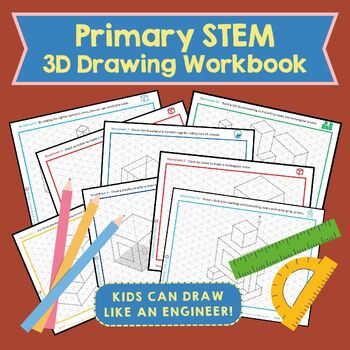Primary STEM workbook 3D Drawing K-3 Elementary STEAM Printable Art Robot
- PDF
Description
This digital download Primary STEM Workbook is a fun No-Prep STEAM activity that prepares K-3 engineering students for model sketching and 3D printing.
The 10 printable worksheets show younger kids how to draw:
-- a robot
-- a city
-- a hamster cage
-- a playhouse
-- and more!
All in 3D!
These coloring pages are specially designed for children in Elementary STEM or STEAM engineering classes, robotics clubs, and makerspaces.
They teach kids how to sketch their models using isometric graph paper -- just like an engineer! This important skill helps them visualize and sketch objects in 3D so they can graduate to CAD software and 3D printing.
The screen-free K-3 engineering activity is a hands-on drawing lesson with an introduction to technical drawing for kids.
For more engineering drawing activities:
BUNDLE - No-Prep Worksheets - How to Draw like an Engineer and Isometric Drawing
3D Isometric Drawing and Design for Middle School
3D Isometric Christmas STEM Designs for Engineering, Makerspaces, PLTW or PBL





